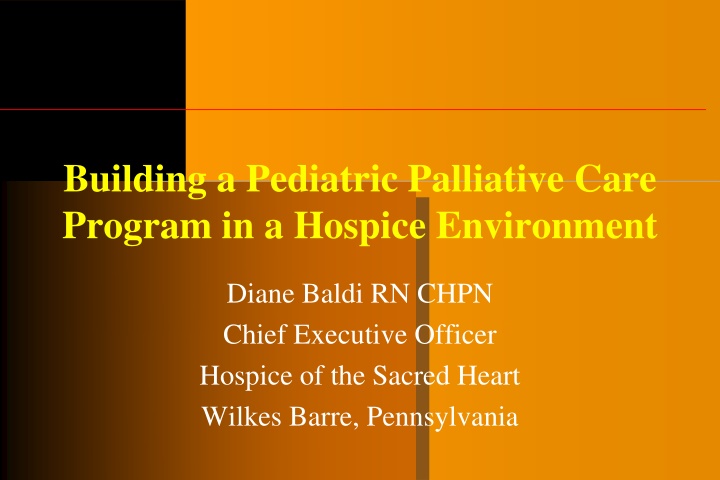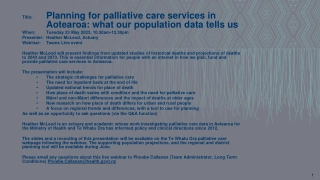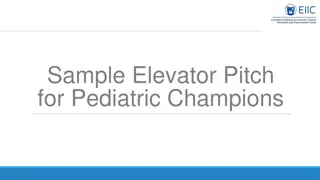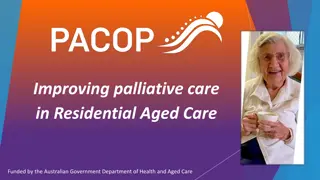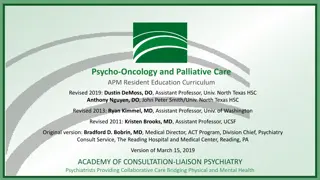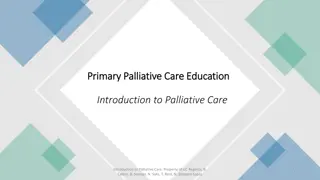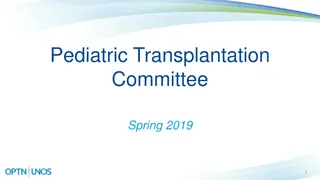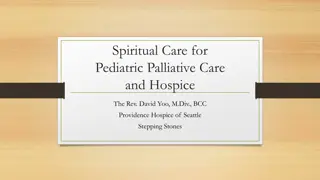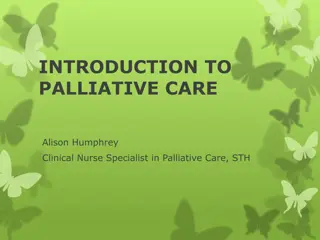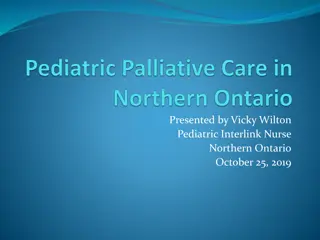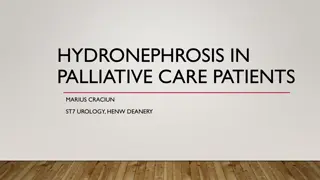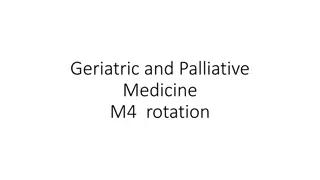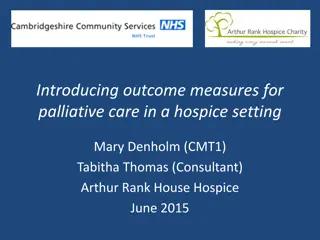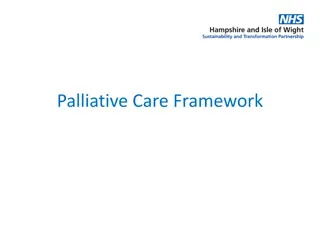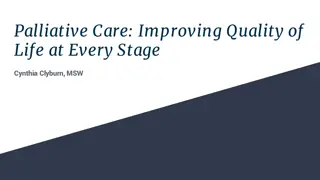Initiating Pediatric Palliative Care: Challenges and Benefits
This presentation explores the development of a pediatric palliative care program in a hospice setting, highlighting the need, partnerships, team establishment, benefits, and challenges involved. It also delves into assessing the effectiveness of such a program and the requirements of concurrent care for qualifying children.
Download Presentation

Please find below an Image/Link to download the presentation.
The content on the website is provided AS IS for your information and personal use only. It may not be sold, licensed, or shared on other websites without obtaining consent from the author.If you encounter any issues during the download, it is possible that the publisher has removed the file from their server.
You are allowed to download the files provided on this website for personal or commercial use, subject to the condition that they are used lawfully. All files are the property of their respective owners.
The content on the website is provided AS IS for your information and personal use only. It may not be sold, licensed, or shared on other websites without obtaining consent from the author.
E N D
Presentation Transcript
Building a Pediatric Palliative Care Program in a Hospice Environment Diane Baldi RN CHPN Chief Executive Officer Hospice of the Sacred Heart Wilkes Barre, Pennsylvania
Objectives Identify and assess the need for a pediatric palliative care program Identify partners to assist in development of pediatric palliative care team Identify methods for establishing the team Identify benefits and challenges of a pediatric palliative care team Assess effectiveness of pediatric palliative care team
Introduction Hospice of the Sacred Heart ADC 230 100+ staff members Medical Team PATH program Bereavement programs Pediatric Program
Sometimes in life there is that moment when it s possible to make a change for the better. This is one of those moments. Elizabeth Glaser
Concurrent Care Requirement Section 2302 of PPACA (Patient Protection and Affordable Care Act of 2010) Requires the state Medicaid program to pay for both curative/life-prolonging treatment and hospice services for qualifying children under the age of 21 Physicians must still verify that the child has a prognosis of 6 months or less
NHPCO Standards of Practice for Pediatric Palliative Care Deliver safe, effective, high quality care for children and their families Enhance effective identification of and response to family needs, including the specifics of care required for children of all ages
Standards of Practice Continued Improve knowledge, skills and support for care providers Identify unmet needs in care delivery so that organizations may expand their services or develop partnerships with other care providers to fill these gaps and address challenges found in providing care to children and their families
Identifying and Assessing Need Census info Referral system Cost, time, need of program NHPCO Facts and Figures April 2009 18.2% children 0-19 died at home (only 56% hospices have cared for children) East vs. West
Fundamental Differences Caring for Children Children are not small adults Prognostication complicated Fragmented care Legal voice absent Children are members of many communities Grief has devastating implications
Identifying Partners to Assist in the Development of Your Team PACT Local tertiary care centers NHPCO Local Pediatricians Bereaved families Home health agencies
Methods for Establishing Pediatric Team in a Hospice Environment Policies/Procedures 24/7 specially-trained providers Key contact person On call pediatric consultative support available 24hr/day Staff education/conferences Ethics Committee
Establishing Pediatric Team continued . Volunteers On call staff Pediatric library Financial Resources Partner with local schools, social services, home health, faith groups All therapies on hand
Ava: A Case Study 5 year old little girl with a glioblastoma multiforme Being treated at CHOP Family,home,staff, Pediatrician Challenges Benefits Lessons learned
Summer: A Case Study 11 year old girl with advanced osteosarcoma Family School IPad Palliative sedation Medical Director
Gary: A Case Study 18 year old with leukemia Senior prom Media and social challenges Bereavement needs Communication
Benefits of a Pediatric Palliative Care and Hospice Team Team environment, reward New experiences and knowledge New opportunities to work with tertiary care centers (Hospice team meets the child and family in the acute care setting to develop goals together) Assisting patients and families during this difficult transition
Challenges of a Pediatric Care Team Social Network Staff concerns Lack of experience in caring for children High tech palliation On call staff Respite care, volunteers Differences in caring for adults vs. children
What Weve Learned Senior management and BOD by-in is imperative Financial implications Importance of gathering team from admission to death to bereavement Major involvement of pastoral care, social services for family and team Importance of preserving memories We have a long way to go .and much to learn
Still learning. Continue educational opportunities Partner with local schools and social service agencies Partner with specialty healthcare agencies Contact local/regional pediatricians Make respite available to families Awareness of agency stress
What Weve Learned continued Support staff Bereavement care Pediatric palliative care orders QAPI project to assess areas of improvement
Hospice Agency Responsibilities Debriefings and discussions of patients Remembrance services Foster collaboration with physicians Outreach programs and in-services to hospitals, physicians, and the community Recognize the need for staff time off and rotation
Hospice Agency Responsibilities continued . Involve staff in forms development Provide emotional support Reassignment to different duties EAP Communication Care Planning/Documentation
In conclusion. A pediatric palliative care program that: incorporates a robust set of both medical and psychosocial interventions has flexibility around eligibility and payment sources is committed to education and collaboration can achieve and maintain a successful palliative and hospice care program for children.
Questions, Comments, Suggestions???
Resources NHPCO Standards of Practice for Pediatric Palliative Care and Hospice 2009 NHPCO Concurrent Care for Children Implementation Toolkit NHPCO Facts and Figures: Pediatric Palliative and Hospice Care in America April 2009 Pediatric ELNEC
Thank You!!! Diane Baldi RN CHPN CEO Hospice of the Sacred Heart 600 Baltimore Drive Wilkes Barre, PA 18702 (570) 706-2400 dbaldi@hospicesacredheart.org
